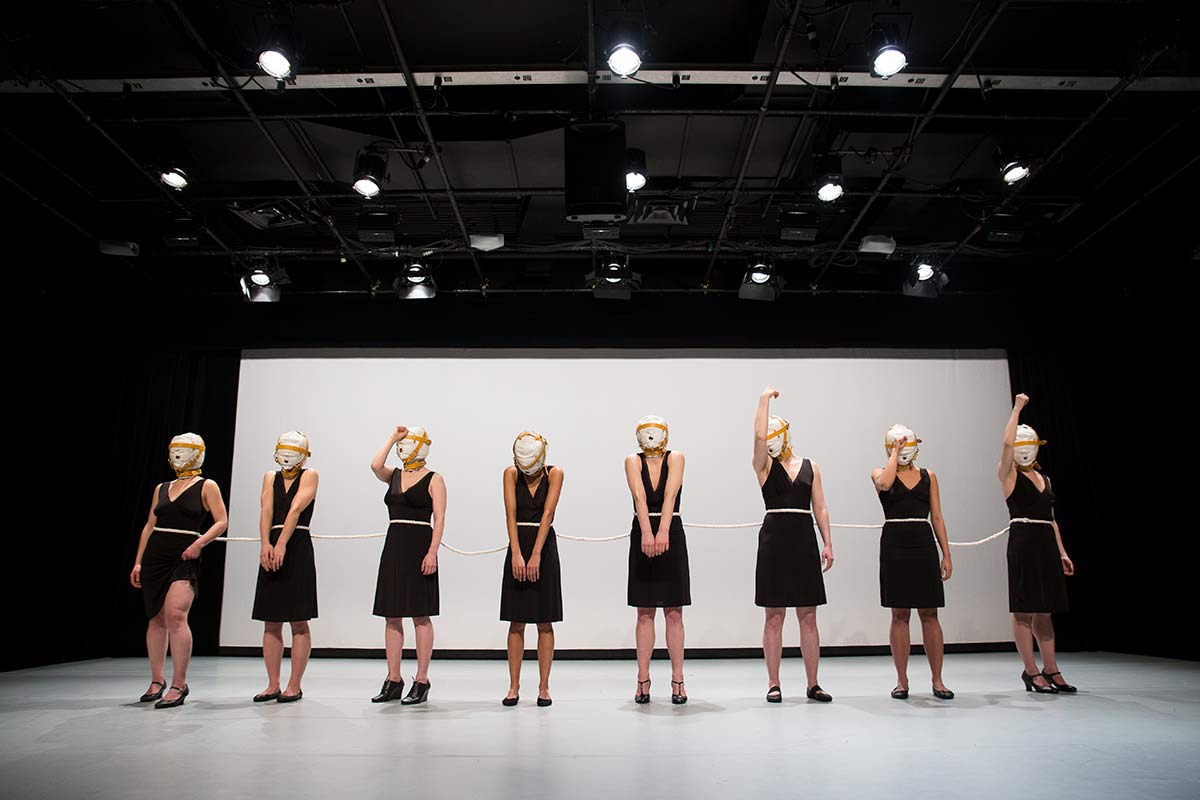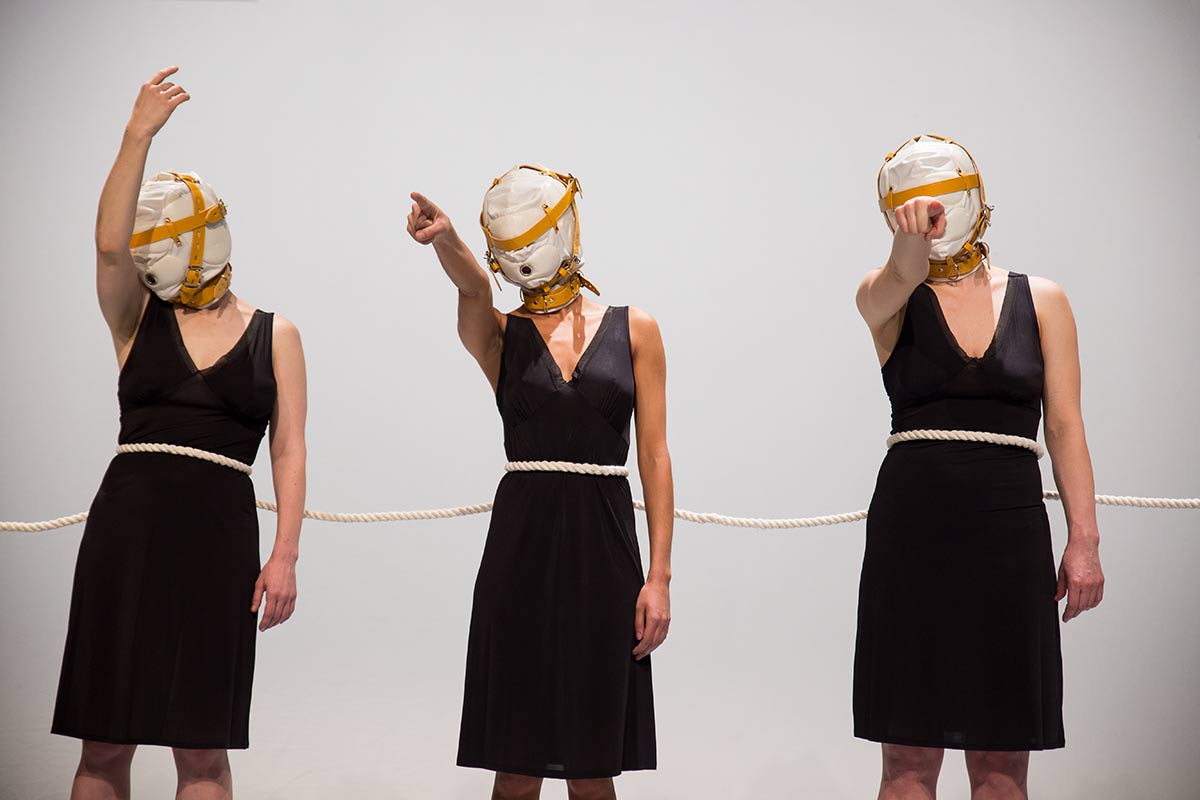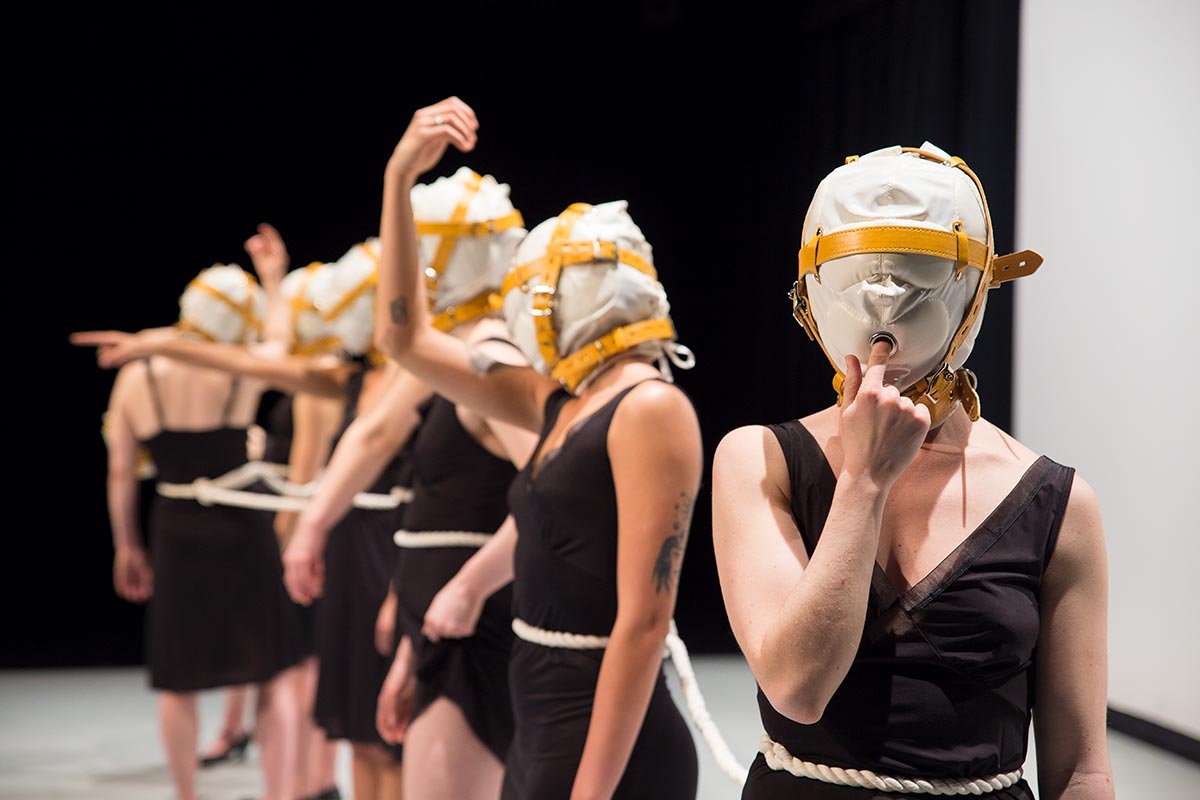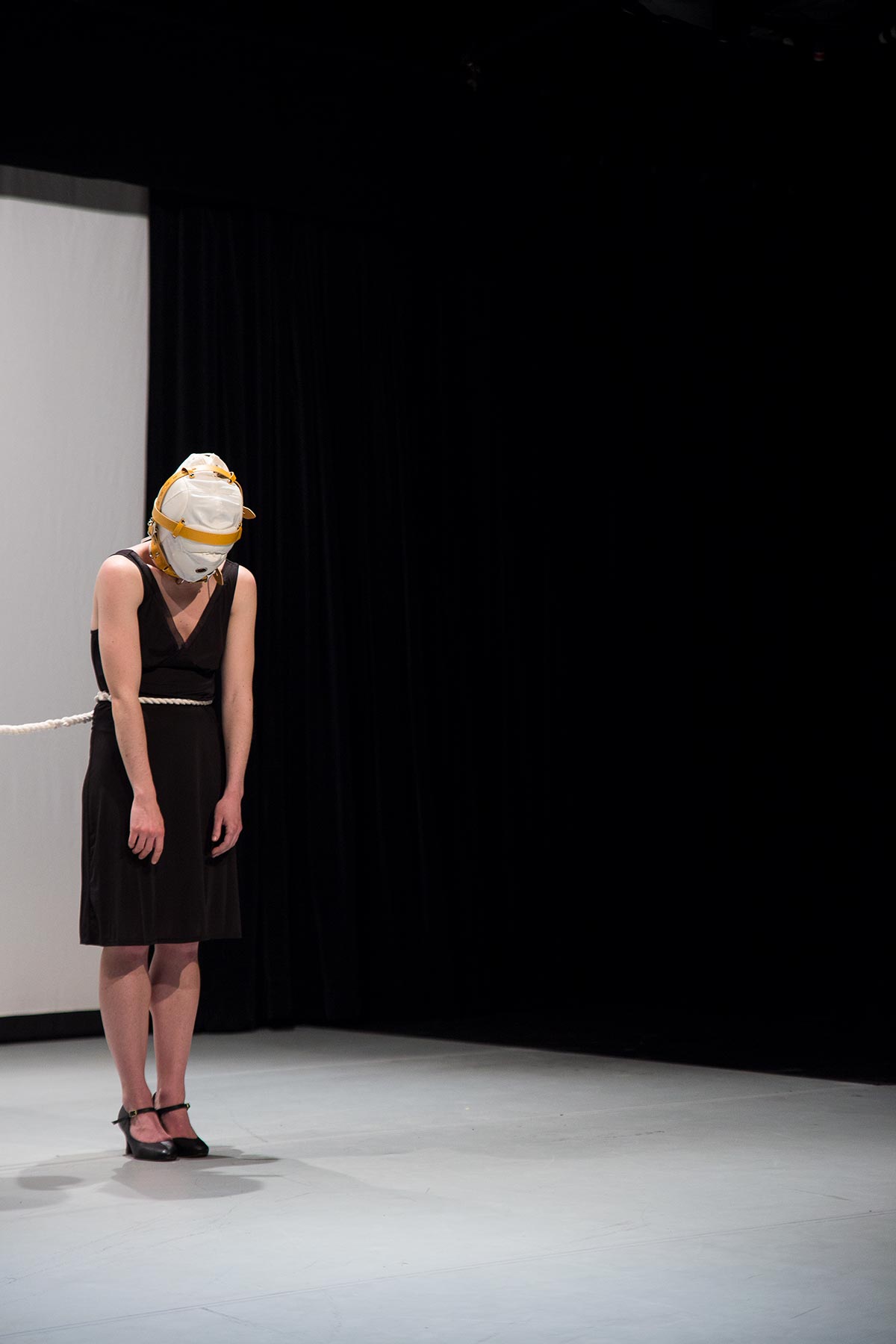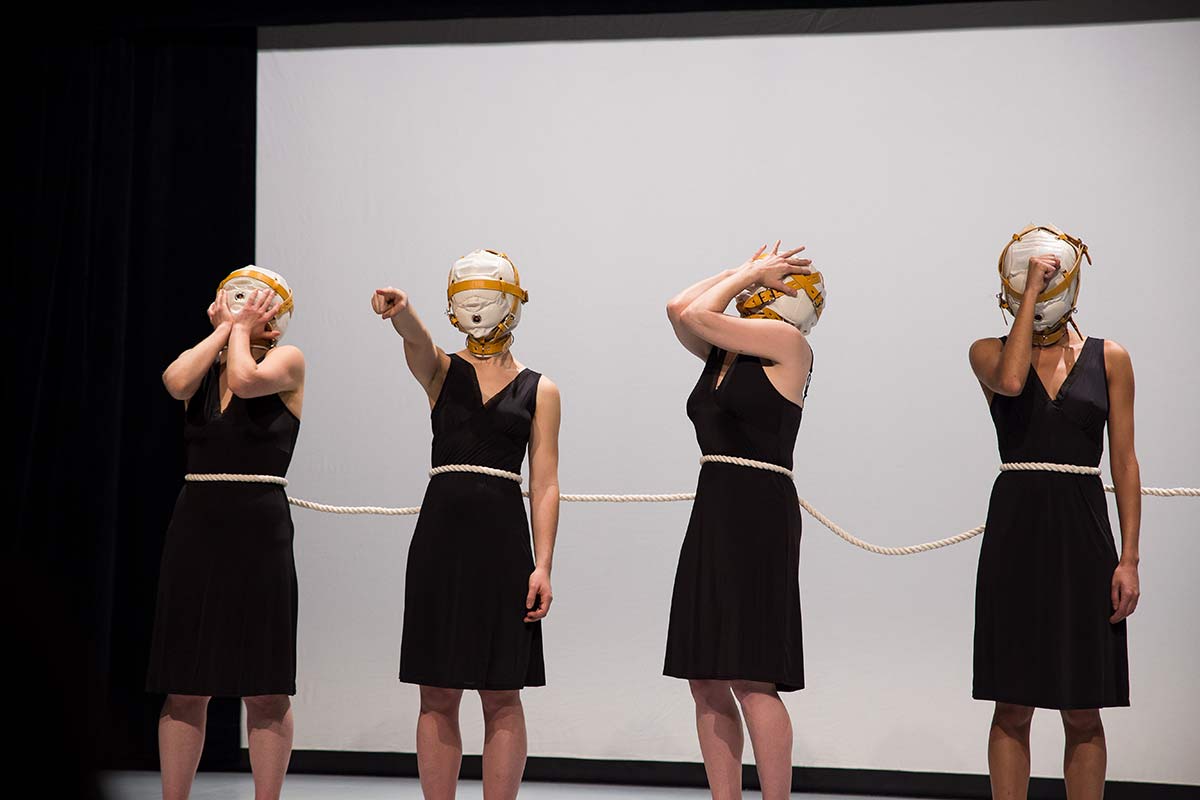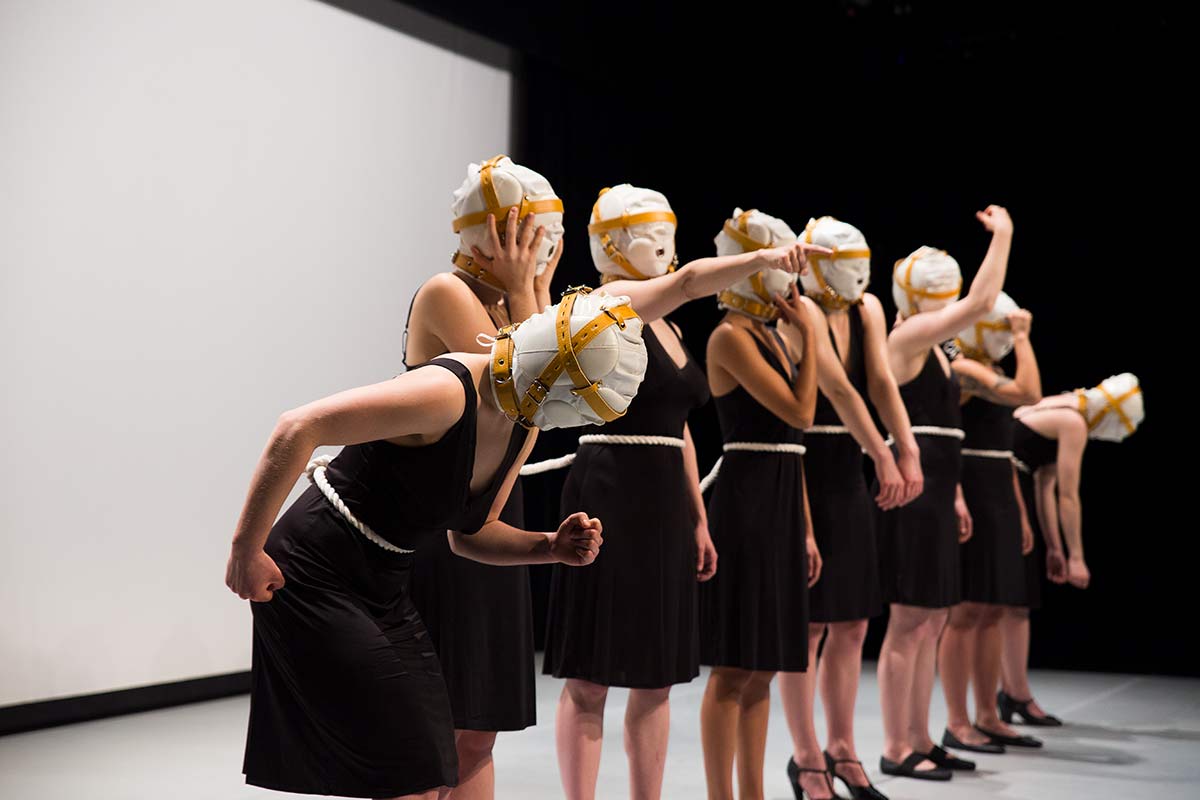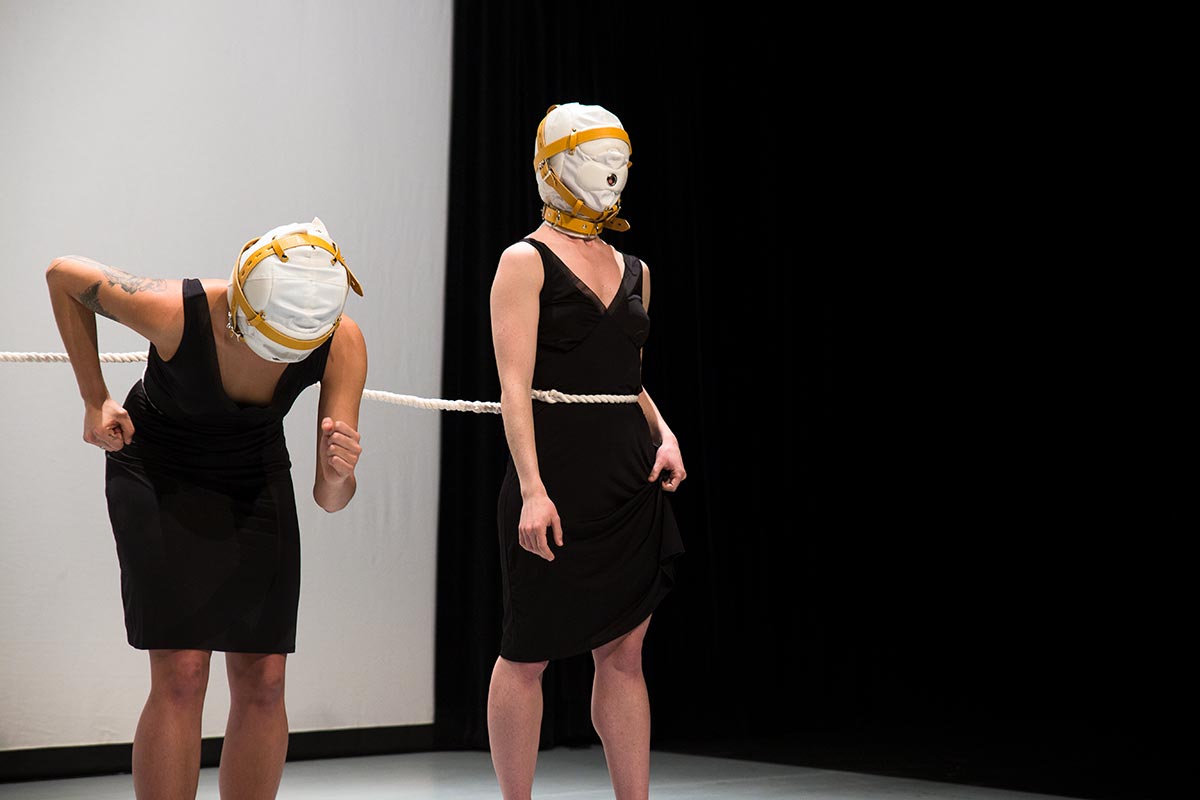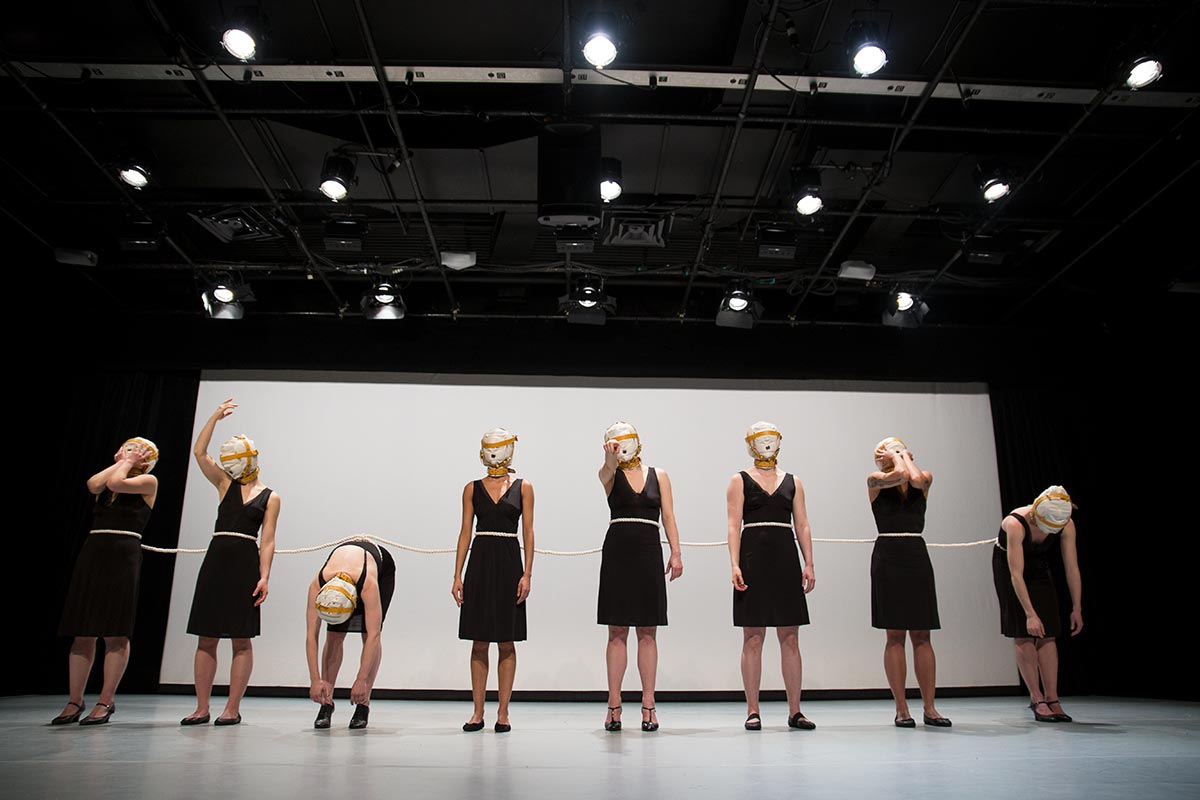“The Sign” is a 60 minutes performance that explores visual culture of shame in relation to the body, subjects and power in contemporary performance art. In this work, eight female performers are tied together with a rope. They wear masks, standing and repeating some symbolic gestures. They hold each gesture for two minutes and then move to the next one at their own paces. The performative gestures are considered as shameful gestures but transgressive, such as, sniffing their armpits, sucking their fingers, lifting up their dresses and so on. For video documentation of this work, please visit
The word shame comes from an Old Germanic word scamen meaning “to cover,” as the response to feeling shamed is often to hide oneself. In many societies, shame is used as a tool of social control, as a way to prevent citizens— especially women—from acting in ways that might disrupt the status quo. “The Sign” is an act of drawing back the curtain and pointing to the deeply embedded feelings of shame that can cause women to hold back and stay silent, transforming the performative gestures into experiences and things that are understood to be universal and relatable.
Over the past five years, I have been creating a series of works that explore visual culture of shame that integrates performance, photography, video, and installation. “The Sign” is one of this series. My focus is exploring the visual culture of shame associated with vulnerability in its personal and socio-political dimensions. I bring together feminism, globalization and psychoanalysis. By investigating parallels, divergences and intersections that occur among contemporary art practices emerging from women and other global cultures and communities, I position making shame visible as a feminist strategy of resistance—an ethical practice that seeks altered states of consciousness that possibly leads to restore dignity and humanity.
Performed by Alida Esmail, Lucy Fandel, Emma Lee Iversen, Alex MacLean, Kim L Rouchdy, Eryn Tempest, Emilie van der Waals, and Mary Williamson
Photo Credit: Adrián Morillo
Video: Michael Wees
Editing: Chun Hua Catherine Dong

